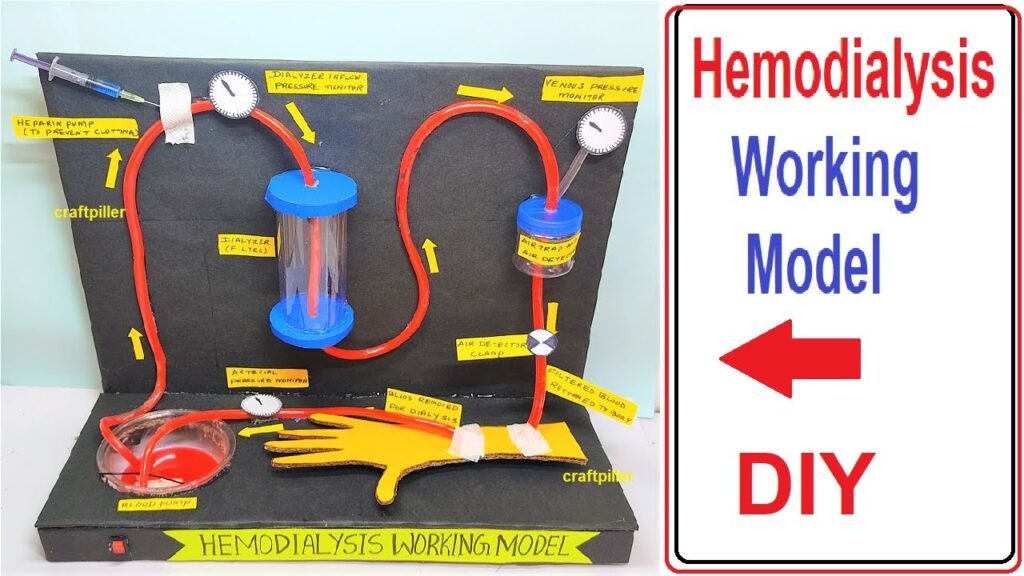Here are 25 engaging school science projects focused on blood vessels, suitable for various educational levels:

Anatomy and Function
- 3D Model of Blood Vessels:
- Construct a detailed 3D model of arteries, veins, and capillaries using materials like clay, plastic tubing, or balloons.
- Circulatory System Poster:
- Create an informative poster that maps out the entire circulatory system, highlighting major blood vessels and their functions.
- Pulse Measurement:
- Measure and compare pulse rates at different parts of the body (wrist, neck, ankle) to demonstrate how blood vessels contribute to pulse detection.
Experiments and Observations
- Effect of Exercise on Pulse Rate:
- Track pulse rates before and after exercise to study how physical activity affects blood flow and heart rate.
- Capillary Action Demonstration:
- Use colored water and thin tubes or paper strips to show capillary action, simulating how blood moves through capillaries.
- Simulating Blood Flow:
- Create a pump and tubing system to simulate blood flow through arteries and veins, comparing flow rates and pressure.
Health and Disease
- Atherosclerosis Model:
- Model how plaque build-up in arteries affects blood flow using materials like clay or playdough inside clear tubing.
- Blood Pressure Monitoring:
- Measure and compare blood pressure among different individuals to study the impact of factors like stress and diet on blood vessel health.
- Varicose Veins Simulation:
- Build a model demonstrating how varicose veins form and how they impact blood flow using elastic bands to simulate valve malfunctions.
Technology and Innovations
- Stent and Bypass Surgery Simulation:
- Create a model showing how stents and bypass surgeries are used to treat blocked arteries, using flexible tubing and wire mesh.
- Imaging Techniques:
- Research and present how imaging techniques like MRI, CT scans, and Doppler ultrasound are used to diagnose blood vessel conditions.
Interactive and Educational Projects
- Blood Vessel Maze Game:
- Design an educational game where players navigate a maze representing the circulatory system, learning about blood vessel functions.
- Aging and Blood Vessels:
- Simulate the effects of aging on blood vessels using models to show changes in elasticity and increased risk of hypertension.
- Blood Flow in Different Body Positions:
- Compare pulse rates and blood pressure in different body positions (sitting, standing, lying down) to study blood flow changes.
Biology and Physiology
- Microcirculation Study:
- Create a detailed presentation on microcirculation, showing how capillaries facilitate nutrient and gas exchange at the cellular level.
- Comparative Anatomy of Blood Vessels:
- Compare the blood vessel structures of different animals (e.g., humans, birds, fish) and explore their physiological adaptations.
Environmental and Lifestyle Factors
- Impact of Diet on Blood Vessels:
- Research how different diets (high-fat, low-sodium, Mediterranean) affect blood vessel health and cardiovascular disease risk.
- Smoking and Blood Vessel Health:
- Create an informative display showing the effects of smoking on blood vessel elasticity and the increased risk of atherosclerosis.
- Hydration and Blood Flow:
- Study the effect of hydration on blood flow and circulation by comparing pulse rates and blood pressure before and after hydration.
Advanced Topics
- Blood-Brain Barrier Model:
- Build a model explaining the structure and function of the blood-brain barrier and its role in protecting the brain.
- Angiogenesis Exploration:
- Study how new blood vessels form (angiogenesis) and present its significance in wound healing and cancer growth.
- Blood Clotting Mechanism:
- Create a model or interactive display explaining the blood clotting process and the role of blood vessels in hemostasis.
Practical Applications
- Healthy vs. Unhealthy Lifestyles:
- Compare the blood vessel health of individuals with different lifestyles (active vs. sedentary) through measures like pulse rate and blood pressure.
- Effect of Temperature on Blood Flow:
- Investigate how temperature changes (hot vs. cold) affect blood vessel dilation and blood flow.
- DIY Doppler Effect:
- Build a simple Doppler effect device to measure blood flow speed in a simulated blood vessel, demonstrating principles of blood flow measurement.
These projects provide a comprehensive exploration of blood vessels, their function, and their importance in overall health, making them suitable for various educational levels and interests.

